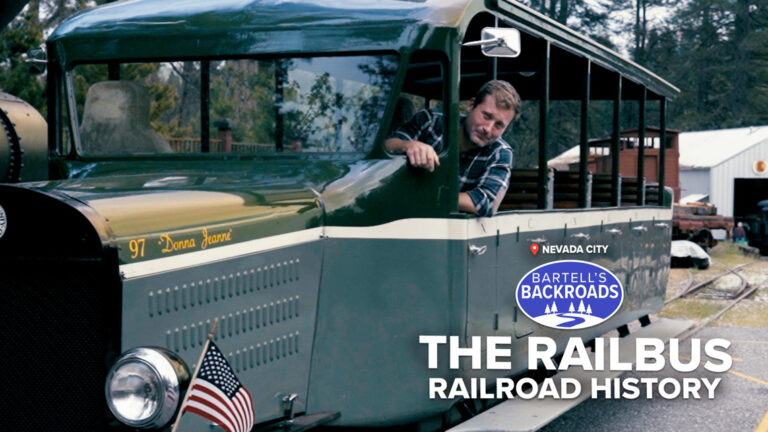Nevada County's narrow gauge railway museum presents rare handmade railroad buses that once connected remote areas to major cities.
Nevada, California – When most people think of railroads, images of steam engines and box cars come to mind. But at Nevada County's narrow gauge railroad museum, there are a bit different things about sharing trucks, or Railbus.
“This is the rail bus we were before and we were before. We could carry 20 people,” said the museum's Don't Spec Lanham, as one of the museum's restored rail buses has passed.
Rail buses are essentially gasoline-powered buses with rail wheels. They were rare and, according to Ranam, each was handcrafted by its own individuality.
“All of these types of communication were built by the chief mechanics of each railway store. There was no place I went to buy these,” he said.
Designed for narrow gauge tracks (cloth closer than standard gauge). Railbuses were often used to connect remote areas, camps, logging camps and mining sites to the main railroad line. The Nevada County line was no exception.
“Nevada County's narrow gauges were built to move gold, timber, agriculture and people from Nevada City and Grass Valley to Colfax,” Lanham said.
The mountainous region made access to the area difficult in the late 1800s. One of the highlights of the museum's tour is the “switchback.” This is a railway operation that allows the railway to zigzag the mountains to expand its sudden results.
“We do something called switchback, and this is how you climb the mountain.
Travel to the backroad in Bartell:
► Hit backload with ABC10+ streaming app for your TV
► View interactive maps wherever John visits on the backroad
► View all backload videos on your mobile phone
►Follow John on Facebook
Nevada County's narrow gauge railroad owes its presence to the vision of the Coleman Brothers and the engineering expertise of John Kidder, a civil engineer who ultimately purchased the railroad from them. His wife, Sarah Kidder, later made history.
“She took over. She was in the office. She paid dividends. She was scheduled. She ran the rail until 1913,” Lanham said. Sarah Kidder became the first woman to own and run a railway several years before women could legally vote.
Today, museums continue to run the engine, not only preserve these stories. One of its outstanding exhibits is Engine #5, a Baldwin locomotive from 1875.
“We're in Engine #5, a Baldwin locomotive from 1875,” said Tim O'Brien, the museum's assistant director.
Engine #5 has a colorful past. They began hauling wood near Lake Tahoe, but Hollywood quickly found another use.
“We were thinking about 26 films,” O'Brien said when asked what films featured the locomotive.
One of its most iconic figures was an early film by John Wayne. Spoilers.
“In the movie Spoilersthey commanded the train from the operator. John Wayne was running through it, while others were firing rifles in taxis.
Hollywood used engine #5 throughout the 1940s and 1970s. This is because the transport and installation of narrow gauge trucks can be easily installed on a film set. After resigning in the 1980s, the museum acquired it, restored it, and lived a second life.
Now, along with Railbus, Engine #5 serves as an ambassador for a bygone era. Visitors downplay that history lives not only in books but also in rails.
Another legendary steam engine on the backroad: The world's largest steam locomotive makes California the first historic trip. Railroad enthusiasts have witnessed the Big Boy 4014, swarming around Portra, California, and embarking on a historic journey through the Feather River Canyon.


